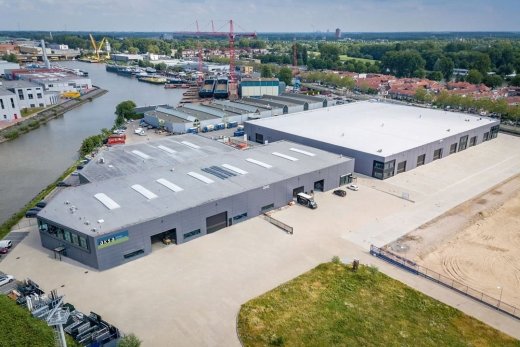When installing a generator system whether for a hospital, industrial site, data center, or commercial facility delivery and setup are just the beginning. Before a generator can be declared operational, it must go through a comprehensive commissioning process to ensure performance, safety, and regulatory compliance.
At Power Genset NL, we view commissioning not as a formality, but as a critical phase that determines whether a generator will deliver when it matters most. In this guide, we break down the full generator commissioning checklist, including site preparation, inspection, functional testing, and documentation.
What Is Generator Commissioning?
Commissioning is the formal process of verifying that all systems and components of a newly installed generator are working as intended. It ensures the generator is properly installed, configured, integrated, and ready to deliver power under real conditions.
This process involves:
- Site inspection
- Mechanical and electrical checks
- Load testing
- Safety and control system verification
- Documentation and sign-off
For mission-critical facilities, commissioning ensures not only compliance but peace of mind.
Why Commissioning Matters
Generators are complex systems. A simple installation error, incorrect connection, or missed configuration detail can lead to failure during an outage. Commissioning helps identify and address issues before the system is put into operation.
Without thorough commissioning, risks include:
- Equipment damage due to improper wiring or grounding
- Performance failure under load
- Delays in emergency response
- Non-compliance with local electrical or safety regulations
At Power Genset NL, we include commissioning as part of all major installations to ensure your investment performs reliably from day one.
Pre-Commissioning: Site Preparation Checklist
Before functional testing begins, it’s essential to confirm that the generator’s environment is ready. Here’s what should be completed prior to commissioning:
Foundation and Mounting
Ensure the generator is placed on a level, reinforced surface capable of handling weight and vibration. For larger diesel generator sets, vibration isolators or spring mounts may be required.
Electrical Connections
All wiring – especially high-voltage cables- must be installed according to local codes. Grounding should be complete, with continuity checks to confirm proper earth resistance levels.
Fuel Supply and Storage
Fuel tanks should be installed, filled with clean fuel, and connected securely. Fuel lines must be tested for leaks, and the system must meet local fire safety regulations.
Cooling and Ventilation
The space must allow for sufficient airflow to prevent overheating. Radiators and fans must be unobstructed, and ambient temperature levels must fall within generator tolerances.
Exhaust System
Exhaust piping should be properly routed and insulated. Mufflers or silencers should be in place, and all connections must be leak-free.
Access and Safety Clearance
Clearances must be maintained around the unit for maintenance and airflow. Fire extinguishers, signage, and barriers should be in place if required.
Once the physical setup is complete, the system is ready for detailed commissioning.
Mechanical & Electrical Pre-Start Inspection
Before powering up the generator for the first time, a thorough visual and mechanical inspection should be carried out. This step includes:
- Verifying all bolts and fasteners are properly tightened
- Checking lubricant, coolant, and fuel levels
- Confirming battery installation and voltage
- Inspecting filters, hoses, and belts for defects
- Reviewing all wiring terminations
The control panel should also be inspected for:
- Proper configuration
- Functional indicators and displays
- Emergency stop functionality
- Communication port readiness (if remote monitoring is planned)
Functional Testing
This phase verifies that the generator performs to specifications under actual load conditions.
Initial Startup
With all systems verified, the generator is started without load. During this phase, monitor:
- Oil pressure
- Coolant temperature
- Voltage and frequency output
- System alarms or warnings
Any irregularities at this stage must be addressed before moving forward.
No-Load Operational Test
Let the generator run for a specified period (typically 30–60 minutes) to confirm thermal stability and component function. Measure noise levels, exhaust conditions, and temperature readings.
Load Bank Testing
Apply an external load using a resistive or reactive load bank to simulate real operating conditions. Ramp up gradually to full load (usually in 25% increments). During each phase:
- Monitor voltage and frequency stability
- Check for overheating or alarms
Measure power factor (if applicable)
For detail, read here.
Automatic Transfer Switch (ATS) Testing
If the generator is integrated with an ATS, it’s vital to verify automatic switchover functionality. The test should confirm:
- The generator starts automatically upon simulated power loss
- The switch transfers load within the required response time
- Re-transfer to utility power is seamless and stable
- ATS status lights and controls operate correctly
A properly tested ATS is key to ensuring zero-delay emergency backup response.
Control Systems and Remote Monitoring
Modern generator systems include digital control units and often integrate with remote monitoring platforms. Commissioning should verify:
- Control software is properly configured
- Event logs and performance data are available
- Alarms trigger correctly and are remotely accessible
- Cloud monitoring (if used) is synchronized and live
This step helps ensure that facility managers can detect faults or performance drops instantly, whether on-site or off-site.
Final Inspection and Handover Documentation
The last step involves producing detailed records and confirming that all tests have passed. Documentation typically includes:
- Pre-commissioning checklist
- Load bank test results
- ATS test logs
- Fuel system and exhaust inspection notes
- Signed commissioning certificate
At Power Genset NL, we deliver a full commissioning report for client records, maintenance planning, and regulatory compliance.
Post-Commissioning Tips
Even after successful commissioning, several post-setup steps ensure long-term reliability:
- Schedule periodic maintenance and inspections
- Re-test under load annually
- Monitor fuel quality and battery health
- Keep generator area clean and accessible
Commissioning is not the end, it’s the foundation for continuous performance.
Why Choose Power Genset NL
Power Genset NL provides end-to-end commissioning services across all generator sizes and applications. Our team of engineers handles every stage from site inspection and installation checks to advanced load testing and regulatory documentation.
We ensure:
- Industry-compliant procedures
- Fully tested and certified systems
- Fast response and expert advice
- Seamless handoff for facility managers
Whether you’re installing a single generator or a fleet across multiple locations, our commissioning protocols guarantee a successful launch of your power infrastructure.
Get Expert Help
If you’re planning a new installation or upgrading your power system, don’t leave commissioning to chance. Contact sales@powergenset.nl to schedule a commissioning consultation tailored to your facility.

